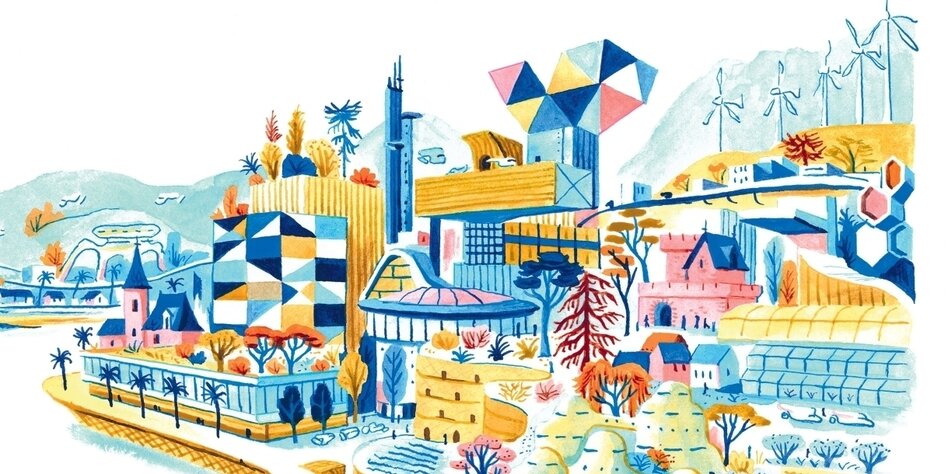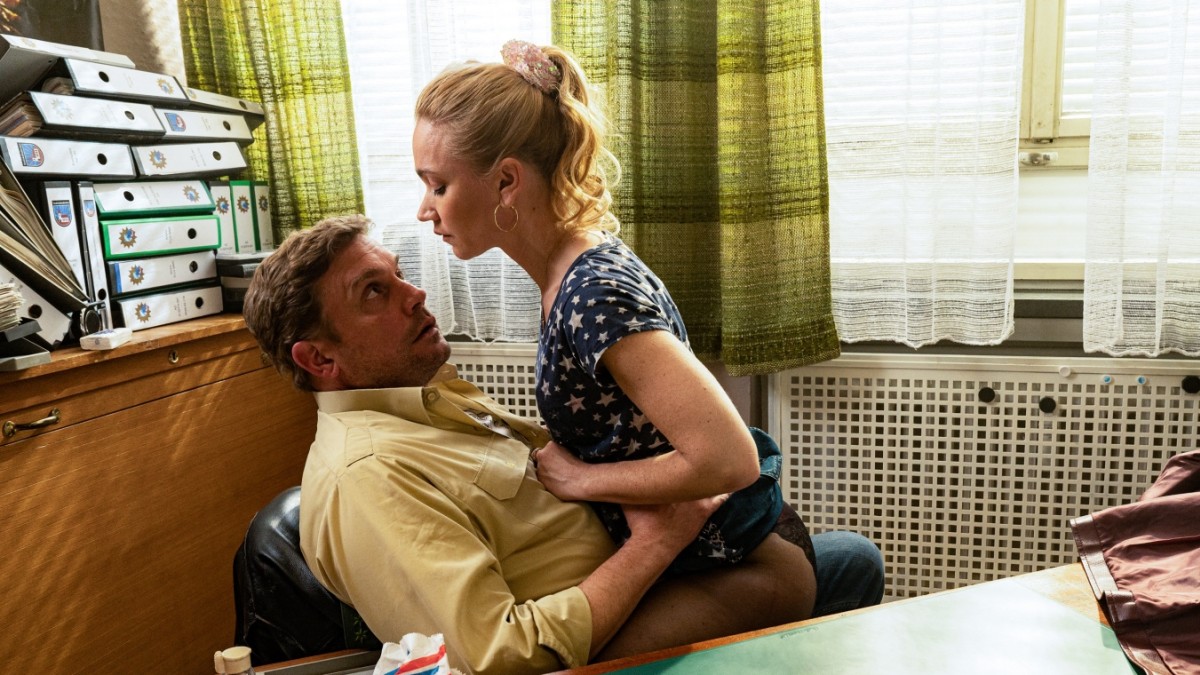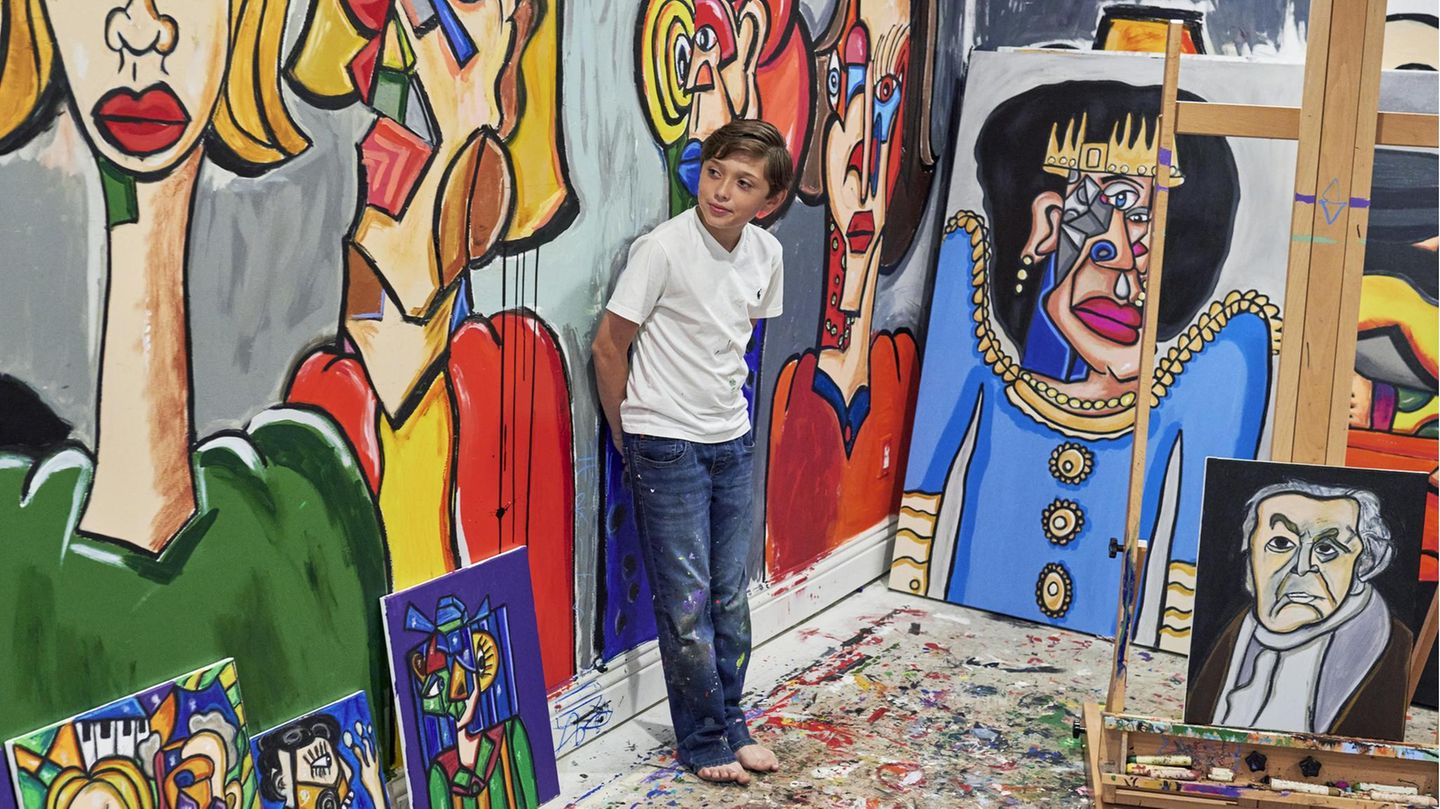Graphic novel about drawing: comic artist in religious habit

Travel back in time to the Middle Ages and the near future: The comic book “Lose Blatter” by Alexandre Clérisse is full of ideas about the joy of storytelling.
It looks a bit different: The second half of the 21st century in “Lose Blatter” Photo: Dargaud/Alexandre Clérisse/Carlsen
Already on the first page it is clear: Max is obsessed. Although the holidays aren’t over yet and the weather is great outside, the boy with the thick glasses is sitting inside – manically drawing a comic book story. His father is surprised that she is playing in the Middle Ages. When Max does go out to sketch in the woods, he comes across a strange man with a long red beard who lives in a castle.
The French draftsman Alexandre Clérisse, born in 1980, does not tell a linear story in his new graphic novel “Lose Blatter”, published by Hamburg-based Carlsen Verlag. The storyline about young Max and his artistic development may have autobiographical traits, but it is only part of a cleverly interlaced narrative. It’s about three people in three different epochs, who are told in parallel.
The fear of the guillotine
There is Max, who in the 1990s feels compelled to draw a story about the copyist monk Raoul in the 15th century. One day, this hero of the second story becomes aware of novel products from a printing press that the authorities have classified as “devilish”. Confined by his own time, Raoul secretly wants to tell and spread stories drawn from the future using the printing technique. Its main characters are Max and Suzie. The fear of the guillotine is great, even if the duke becomes the biggest fan of the resulting “comic”.
Suzie, in turn, is the heroine of the third parallel thread: the adult daughter of Max, the now famous old comic artist. She lives in the second half of the 21st century, also draws and continues Max’s comic series using virtual reality – now an outdated technology. Is Suzie the actual narrator of this book, or is it young Max? Or is it even the monk and comic pioneer Raoul, whose imagination wanders into the distant future?
The narrative levels dissolve
The creator of this narrative world, the draftsman Clérisse, has often worked together with the author Thierry Smolderen, who has a penchant for complex narrative constructions. Their joint graphic novels such as “The Imperium of the Atom” (2013) and “A Diabolical Summer” (2016) appeared in German translation, while Clérisse’ other comics in this country have been ignored so far. With “Loose Leaves” he now presents his masterpiece.
The graphic novel becomes particularly exciting at one point: when it becomes clear that the different narrative levels influence and threaten each other. The draftsman provides the chapter division with deliberately confusing designations such as “preamble” or “prelude”, jumps from “chapter one” to “chapter one” and so on. But that doesn’t affect the comprehensibility. The fact that the narrative levels are questioned and gradually dissolve is what makes reading so much fun.
Lesson on drawing comics
Alexandre Clérisse is known for drawing his comics using digital vector graphics. Its page layouts are reminiscent of colorful infographics. This time he uses classic tools: the pictures were created as preliminary pencil drawings on paper and colored with acrylic paints using the Couleur directe technique. What is particularly clever is that his visions of the future, which often span double pages, are based on book illustrations from the 15th century – the Duke of Berry’s “Book of Hours”. So it seems as if the monk Raoul really dreamed of a future city based on the knowledge of the time. The slightly naïve touch of these large hidden object pictures in the book is therefore well founded.
“Loose Leaves” (in the original “Feuilles volantes” also means “leaflets”, like the first widespread printed matter around 1488) is a virtuoso constructed and graphically varied lesson in comic drawing and storytelling. It makes you want to go on a (book) journey through time – to roam through old pictorial worlds or to look for early visions of the future, which mostly tell of the present of the respective illustrator.











